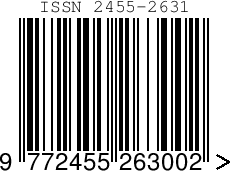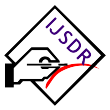Imp Links for Author
Imp Links for Reviewer
Research Area
Subscribe IJSDR
Visitor Counter
Copyright Infringement Claims
Indexing Partner
|
Published Paper Details
|
|
| Paper Title: | Viterbi Algorithm-Based Hidden Markov Modeling and the Fuzzy Gaussian Membership Function Regression Mapping of the Lithologic Logs Along the Madogo-Mororo-Maramtu Settlements |
| Authors Name: | Dr. M.O. Amimo , Prof. Dr. K.S.S. Rakesh |
| Unique Id: | IJSDR2212077 |
| Published In: | Volume 7 Issue 12, December-2022 |
| Abstract: | The present study is an attempt at simplifying the task of supervision and planning for drilling of wells along the Tana Alluvial Aquifer, with respect to the layering sequences of the prevalent stratigraphic columns along the Tana Flow course and even beyond. The climate change dynamics have led to falling well water levels, with some wells ending up as completely dried out, on the account of limited or low laminar flow recharge inputs, arising from the low levels of rainfall being occasioned. It is an attempt at developing simulation models of aquifer drill cuttings using the Hidden Markov Models and also using the Gaussian membership function-based predictive analytics. The basis of using the HMM methods is that the geologic layers have been studied over the years and have a consistent layering sequence defined by the geological Time of deposition of sediments in the Miocene and Jurassic periods. The geo-stratigraphic columns thus behave like a State of Stationary Markov Process, and may thus be modeled using Discrete Transition Probability Matrix (DTPM), and Emission Probabilities (EM) to simulate both observation sequences (clays, fine sandstones and coarse sandstones) and the state sequences (aquifer viability status) of each log. The two stochastic properties, DTPM and EM may be used to predict the state sequences (hidden aquifer status of the drilled logs). The HMM algorithm may be employed to predict the rock lithologic species logged to date (observations), as well as the expected (but hidden) stochastic states, coded as thus: barren, moist and saturated rock units. For the purpose of these HMM simulations, the Viterbi algorithm was used to simulate the expected aquifer status of a geolog assemblage. When the data was fed to an HMM algorithm so developed, so that the clays, coarse sands and fine sands would help infer if the logged material presented a state of barren-ness, moisture, or saturation, for each of the respective observed geologic input, results came out favorably, which matched with the established aquifer viability status of the input (class code of) geologic input material. The logs drilled were sampled and assembled in geologger box. For the ANFIS Neuro-Fuzzy Gaussian models, the data frame of the Tana Alluvial aquifer, complete with longitudes, latitudes, elevations and the logged interval depths of past drilling records and the geology of the material drilled, was indicated. Training and testing data sets were prepared. The new area/site being drilled, and whose GPS coordinates and observed geolog depths are known, had its log depth data fed into the model, which made estimation, with an accuracy of 100.0 percent, of the class of geologic material expected at the log depths specified. The GPS values and the log depths were used to predict the geology of the drill cuttings yet un-drilled. The study concludes that neuro-fuzzy regression algorithm using the frbs R library is a useful stochastic mapping tool for making inferences into the hydro-stratigraphy of the Tana Alluvial Aquifer. The study also vindicates the use of Hidden Markov Models, as a powerful simulation tool, in aiding the researcher make a conclusion, as to how many more meters of depth will be drilled before he obtains a logged lithologic unit, with brighter prospects of a productive aquifer material in the course of drilling progress. Key words—Gaussian Membership Functions, Stochastic Hydrology, Hidden Markov Models, Markov Chains, Transition Probability Matrix, Neuro-Fuzzy, Tana Alluvial Aquifer. |
| Keywords: | Gaussian Membership Functions, Stochastic Hydrology, Hidden Markov Models, Markov Chains, Transition Probability Matrix, Neuro-Fuzzy, Tana Alluvial Aquifer. |
| Cite Article: | "Viterbi Algorithm-Based Hidden Markov Modeling and the Fuzzy Gaussian Membership Function Regression Mapping of the Lithologic Logs Along the Madogo-Mororo-Maramtu Settlements", International Journal of Science & Engineering Development Research (www.ijsdr.org), ISSN:2455-2631, Vol.7, Issue 12, page no.496 - 516, December-2022, Available :http://www.ijsdr.org/papers/IJSDR2212077.pdf |
| Downloads: | 000337061 |
| Publication Details: | Published Paper ID: IJSDR2212077 Registration ID:203044 Published In: Volume 7 Issue 12, December-2022 DOI (Digital Object Identifier): http://doi.one/10.1729/Journal.32328 Page No: 496 - 516 Publisher: IJSDR | www.ijsdr.org ISSN Number: 2455-2631 |
|
Click Here to Download This Article |
|
| Article Preview | |
|
|
|
Major Indexing from www.ijsdr.org
| Google Scholar | ResearcherID Thomson Reuters | Mendeley : reference manager | Academia.edu |
| arXiv.org : cornell university library | Research Gate | CiteSeerX | DOAJ : Directory of Open Access Journals |
| DRJI | Index Copernicus International | Scribd | DocStoc |
Track Paper
Important Links
Conference Proposal
ISSN
 |
 |
DOI (A digital object identifier)
  Providing A digital object identifier by DOI How to GET DOI and Hard Copy Related |
Open Access License Policy
Social Media
Indexing Partner |
|||
| Copyright © 2024 - All Rights Reserved - IJSDR | |||






Facebook Twitter Instagram LinkedIn